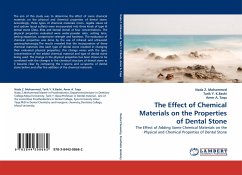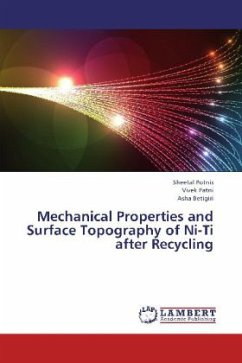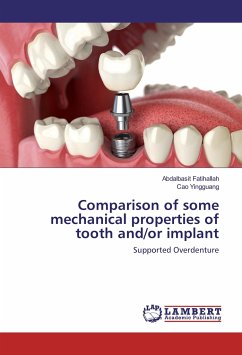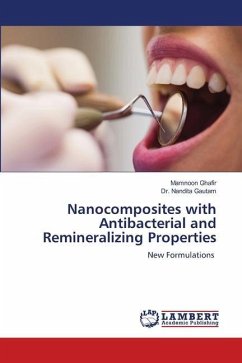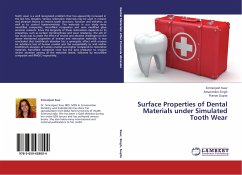
Surface Properties of Dental Materials under Simulated Tooth Wear
Versandkostenfrei!
Versandfertig in 6-10 Tagen
36,99 €
inkl. MwSt.

PAYBACK Punkte
18 °P sammeln!
Tooth wear is a well recognized problem that has apparently increased in the last few decades. Various restorative materials may be used in erosion and abrasion lesions to restore tooth structure, function and esthetics, as well as to control hypersensitivity. The materials in our study were nanofilled composites, microfilled composites and resin modified glass ionomer cements. Since the longevity of these restorations depends on its properties, such as surface microhardness and wear resistance, the aim of our study was to assess the effect of erosive and abrasive challenges on the above menti...
Tooth wear is a well recognized problem that has apparently increased in the last few decades. Various restorative materials may be used in erosion and abrasion lesions to restore tooth structure, function and esthetics, as well as to control hypersensitivity. The materials in our study were nanofilled composites, microfilled composites and resin modified glass ionomer cements. Since the longevity of these restorations depends on its properties, such as surface microhardness and wear resistance, the aim of our study was to assess the effect of erosive and abrasive challenges on the above mentioned properties of enamel and restorative materials. It was concluded that toothbrush abrasion has a synergistic effect with erosion on substance loss of human enamel and the susceptibility to acid and/or toothbrush abrasion of human enamel was higher compared to restorative materials. Nanofilled composite resin has the best resistance to erosion and/or abrasion among all the materials tested, followed by microfilled composite and RMGIC respectively.



